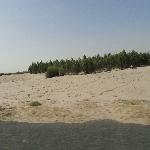 Shazia Afzal May 14, 2013 06:07 |
It is nice project and should be implemented at the earliest. These areas are without proper utilization in Pakistan and if forested they can be utilized efficiently as well as could help in the reduction of CO2.
|
 Ijaz Mehboob May 14, 2013 07:17 |
I support this proposal because it seems me complete in all aspects and implementable as well as it is effective in the Green house gases reductions efficiently on long term basis.
|
 Irfan Ahmad May 14, 2013 08:31 |
Barani areas of Pakistan like Khushab District can serve as timber mine of Pakistan as well as carbon storage pools.
|
 Muhammad Asif May 15, 2013 02:20 |
As we all know that Pakistan is the country with meager forest cover of 2.9%. So,to enhance vegetation cover, it is dire need of time to support such type of projects.
|
 Sadaf Gul May 15, 2013 04:45 |
It is very nice and different piece of work in field of forestry.
|
 Pia Jensen May 15, 2013 01:57 |
Please consider:
Ectomycorrhizal Fungi
www.nifg.org.uk/ecto.htm
Ectomycorrhizal Fungi are, economically, one of the most important groups of fungi. ... Thus in forest management, if we do not manage for the mycorrhizal fungi
Successive pot cultures reveal high species richness of arbuscular endomycorrhizal fungi in arid ecosystems www.nrcresearchpress.com/doi/abs/10.1139/b96-225#.UZPFgYKmj4Y
Some occurrences of vesicular-arbuscular mycorrhiza in natural and disturbed ecosystems of the Red Desert www.nrcresearchpress.com/doi/abs/10.1139/b79-079#.UZPF0YKmj4Y
Patterns of species composition and distribution of arbuscular mycorrhizal fungi in arid regions of southwestern North America and Namibia, Africa www.nrcresearchpress.com/doi/abs/10.1139/b99-183?journalCode=cjb1#.UZPFUYKmj4Y
Mycorrhizal fungi as drivers of ecosystem processes in heathland and boreal forest biomes www.nrcresearchpress.com/doi/abs/10.1139/b04-123#.UZPEtYKmj4Y
Influence of arbuscular mycorrhizal fungi and salinity on growth, biomass, and mineral nutrition of Acacia auriculiformis link.springer.com/article/10.1007/s00374-003-0636-z#page-1
The contributions of mycorrhizal fungi to the determination of plant community structure link.springer.com/article/10.1007/BF00000091
|
 Ayyoub Tanvir May 20, 2013 06:35 |
I Think a research on the assessment of carbon storage capacity of fast growing trees in the desertic/barani areas, where water is available, should be carried out in this project.
|
 2013ag/forestryjudges 2013ag/forestryjudges Jul 3, 2013 01:04 |
Well written document addresses all four points. Describes the feasibility, selects a set of items that would be implemented in a local area, and notes the impact on climate change. No supporting pictures in it though, which would help. Relatively small project at $65,000
|
 Shafaqat Ali Jul 12, 2013 01:49 |
nice idea and well written
|
 Asim Afridi Jul 12, 2013 02:46 |
This project will impact climate positively as well as will lower the poverty in these areas.
|
 Ishtiaq Ahmad Jul 12, 2013 02:59 |
great project for the people of barani areas....of course...excellent for reducing CO2 in sustainable way
|
 Muhammad Akram Jul 12, 2013 02:34 |
social forestry is an excellent way for carbon sequestration on sustainable basis
|
 Amer Hussain Shah Jul 12, 2013 02:00 |
Excellent Project
|
 2013ag/forestryjudges 2013ag/forestryjudges Jul 29, 2013 12:39 |
This proposal works on a very small scale of 100 ha, regarding planting eucalypts on degraded, very dry lands which are marginal in Thal desert, and salty.
Requires farmers to pay 20 percent of 1 acre planting costs + plant 2nd acre themselves. Are these costs and is this model feasible for these farmers in this context?
Relative to other proposals in the contest, this proposal had low climate benefits.
|
